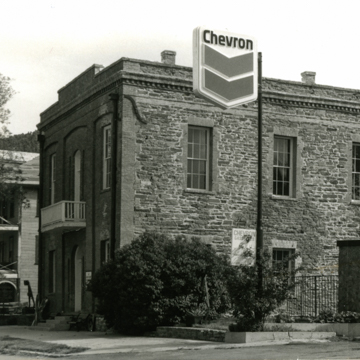Known as the “million dollar courthouse,” this Italianate structure is reputed to be the most expensive building erected by a county in nineteenth-century Nevada and stands as an example of government corruption. Construction costs totaled $75,000, equivalent to $1,084426 today—an amount far above the agreed-upon price. The debts incurred and the county's subsequent mismanagement resulted in a final cost of at least $800,000, equivalent to $11,567,213 today. The local government retired the debt in 1938, at the same time it was constructing a new Moderne courthouse.
Local designers T. Dimmock and Thomas Keefe provided the county with plans for the simple, two-story brick edifice with rubble stone side walls. The brick front elevation has three bays, separated by unadorned pilasters. An elegant fanlight and narrow side lights with arched caps surround the double wooden doors of the primary entrance. The second-story door, with arched transom and narrow side lights, leads to a wooden balcony. A simple brick cornice with dentils supports a parapet wall. The former courthouse now serves as a local history museum.

